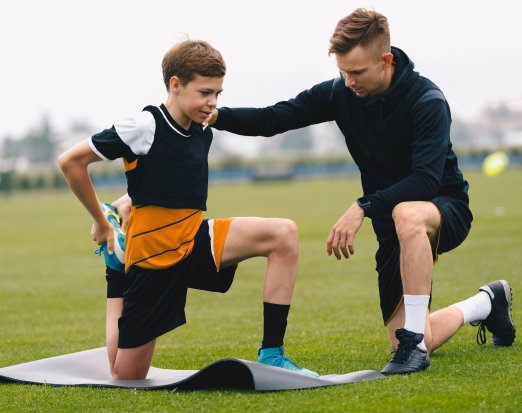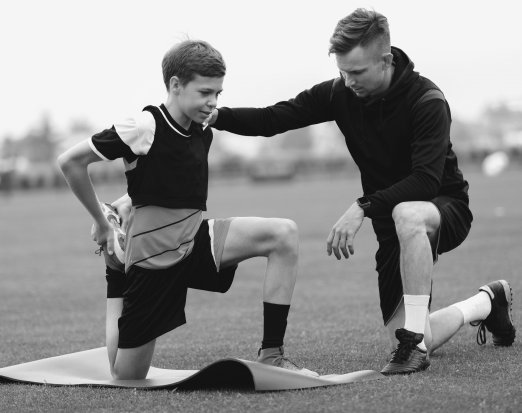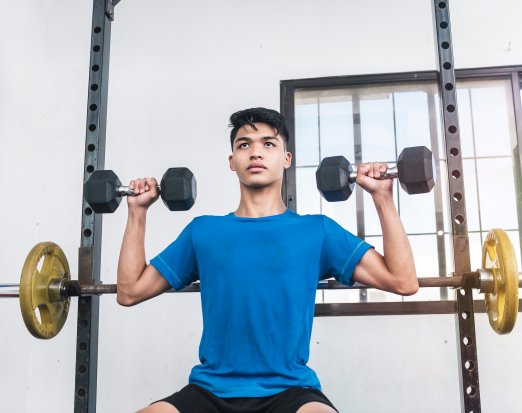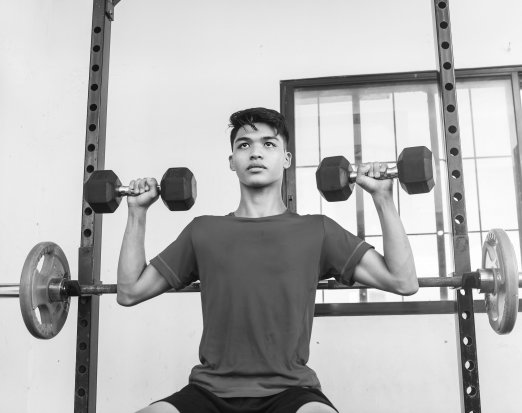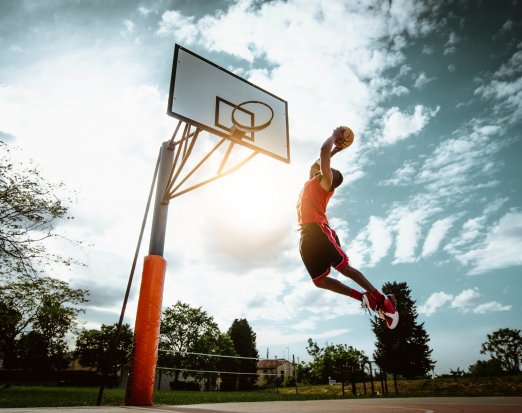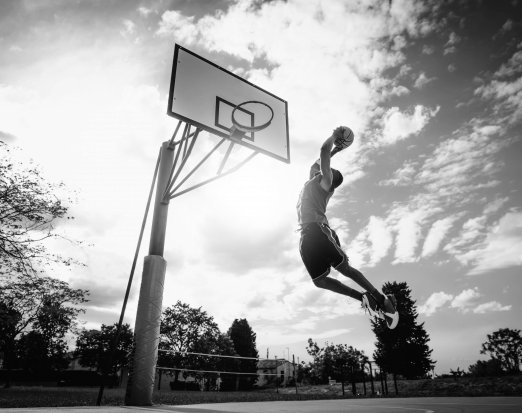Youth Strength Training
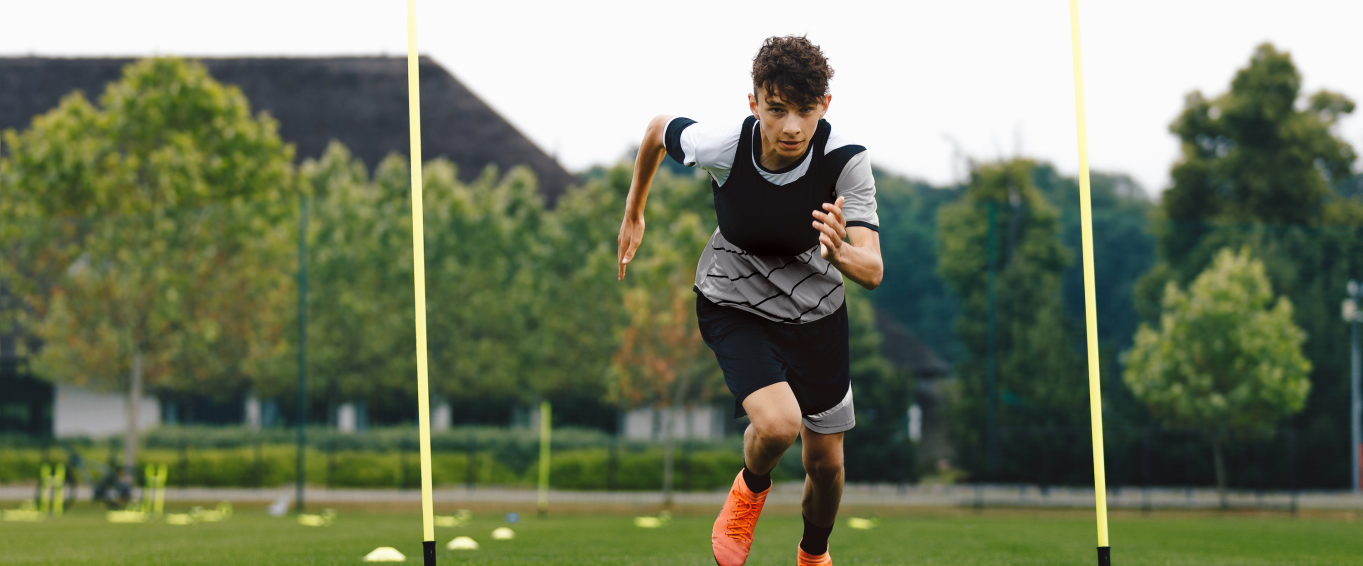
You often hear sport coaches shout out to their youth athletes to be strong, for example, when the youths are eyeing-up a tackle or trying to hold-up the ball in football. From a strength coach perspective, it’s an interesting expression especially when most youth athletes are not performing regular strength training. Further still, reports are suggesting that youth athletes are not strong enough to play sport (4), and this may place them at greater risk of injury (7). So, if sport coaches are using the term be strong, this implies that strength is an important fitness quality for sport participation and possibly sport performances. This, therefore, raises some central questions for Youth Strength Training, including, how can strength improve sport performances? What are the different forms of strength training for youth athletes? is there an optimal frequency, intensity, and volume for youth athletes? And, can strength training actually reduce sport-related injuries?
In this blog we will explore these questions, with the aim to help sport coaches with practical information on youth strength training and how they can guide their youth athletes to developing their strength.
How can strength improve sport performances?
Strength training and the ongoing physical development in youths is complex due to the different stages of maturation, as youths will naturally become stronger as they age (10, 12). Furthermore, strength training and athletic performances should be reviewed with a long-term plan. The research is consistent with youths performing regular strength training and improvements in sprint, jump ability and agility. For example, a rare longitudinal study completed by Keiner et al. (6), explored the difference in acceleration and agility in young professional footballer players. Group 1 completed their regular football training, whereas, Group 2, completed their football training and strength training. The authors reported that Group 2 significantly improved both their agility (change-of-direction) and their 10-metre sprint times – both essential within the football game.
Another study completed by Comfort et al. (3), investigated the relationships between strength, sprint, and jump performances in youth football players. Comfort reported that there was a medium to strong correlation between absolute strength and 5-metre acceleration times. Relative strength showed more of a correlation with 20-metre sprint times. The authors concluded that developing lower-body strength in youths is essential for sprint and jump performances.
With more female athletes playing sport, it is important to encourage youth female athletes to start strength training early too. This notion was reported in a meta-analysis by Hughes et al. (5). The authors investigated different strength training modes, their effect on lower body strength, and changes in sprint performances in youth female athletes (0 – 10m, 0 – 20m, and 0 - 40m). The results of the analysis reported that the younger female athletes (<18yrs) improved their sprint performances more than the older females (>18yrs), suggesting that early entry into strength training will develop neuromuscular adaptations leading to greater sporting performances.
Encouraging youth athletes, in-conjunction with their sport, to regularly perform strength training is essential for long-term development, sport readiness, and improvements in motor skills and performance characteristics – sprint, jump ability and agility. It is clear that strength training has a role in youth sports and long-term physical development.
What are the different forms of strength training?
Strength training or sometimes referred to as resistance training can come in many forms, including – bodyweight training, machine-based training, free-weights (traditional dumbbells and barbells) and resistance bands. Technically plyometrics are also a form of resistance training, you can read more about plyometrics and youth development here.
The different forms of strength training should not be confused with the different methods of training; a few examples of strength training methods are, single-sets, multi-sets, and pyramids.
All forms of resistance training will benefit youths in their strength development (16), however, exercises that fall in the free-weight family (dumbbells, kettlebells, medicine balls, barbells) have shown to be more effective (8). This can be explained as free-weights enhance motor skills, especially balance and coordination (2). Furthermore, exercises performed with free-weights can be manipulated through changes in load and/or speed of movement, which may drive further strength changes and sporting performances. As a rule, untrained and youth athletes starting their strength training journey will gain general strength adaptations and performances. As the athlete develops their strength, the strength training may become more specific to match the athlete’s needs and sporting demands (17).
Is there an optimal strength training frequency, intensity, and volume for youth athletes?
The frequency of training is normally expressed by how many times the athlete performs strength training, i.e. once, twice or three times a week. Training intensity is calculated from an athlete’s 1-rep maximum (1RM) or subjectively through repetitions in reserve. Training volume is expressed through the number of sets per exercise (repetitions x sets) and can be calculated per session or per week.
Interestingly, there was no significant difference in youth athletes training, once, twice or three times a week. However, this will be a consideration as the athletes develop their long-term strength. What was more important is the training intensity, volume, and training adherence. In the meta-analysis by Lesinski et al. (8), the authors concluded that effective training for youth athletes >80% 1RM, for 5 sets, in 6 – 8 exercises, > 23 weeks.
Please remember that youth athletes will work and build up to these suggestions, it clearly doesn’t mean they start here. Youth athletes with no strength training experience will see improvements with bodyweight and medicine ball training using single sets and relatively low loads (9). The key to strength training, like sport practice, is to be consistent and adhere to the training.
Can strength training reduce sport-related injuries?
Unfortunately, youth-sport injuries are on the rise, with many of the injuries classified as overuse injuries (Rejeb et al 2017). There are many risk factors to overuse injuries, which we explored in our Higher Frequency of Injures in Youth Sport blog. From a strength training perspective and injury reduction, it is suggested that youth athletes regularly complete neuromuscular training. According to Myer et al. (11), the following types of training fall into neuromuscular training – all forms of strength training, balance, plyometric, and agility training.
A clear example of this is in an analysis by Steib et al. (15), where the researchers reported an 42% reduced risk, when neuromuscular training was performed 2 – 3 sessions per week. Another example, of good training strategies to reduce injuries is through the FIFA 11+ injury prevention programme, where the coaches introduced neuromuscular type training in the warm-up and injures fell by 30% in their football players (14).
As athletes develop their strength further, it has been reported that relative strength maybe an important factor in reducing injuries. Case et al. (1), recruited a range of athletes and assessed their relative strength using the back squat. The author reported that athletes who were below a relative strength ratio of 1.6x bodyweight (example, an athlete bodyweight of 75kg, should aim to have a strength level of 120kg in the back squat - this can be viewed as a buffer in strength), were more likely or susceptible to a lower limb injury. These studies show the importance for youth athletes in performing neuromuscular training, which includes strength training, balance, plyometrics and agility training, and their role in reducing injuries. Small, frequency episodes of training, like the training in the FIFA 11+ study can make a large difference. Therefore, all forms of strength training seem to be a major component in reducing injuries.
Summary
Encouraging youth athletes to perform regular strength training will develop their strength through a cascade of neuromuscular adaptations. This will lead to greater force production and improvements in sprinting, agility, and jumping performances. It is also clear that strength training falls into neuromuscular type training which has a role in reducing injuries. Youth athletes can start with bodyweight type training, and as their strength level develops, use a variation of free-weight type exercises including, medicine ball, dumbbells, kettlebells, and barbells. The training frequency (sessions per week) doesn’t need to be high, reducing time constraints and barriers (1 – 3 sessions per week). The training intensity is an important factor. It is suggested that youths start with low load and as their strength develops, works towards >80% 1RM. Furthermore, the adherence to strength training is essential, and should be viewed as a long-term plan.
By offering strength training to youth athletes, and through regularly training, youth athletes can develop their strength, skill level, possibly protective themselves from injuries, and use their new motor performances (sprint, agility, jump ability) when playing their sport.
Youth Strength & Conditioning Platform for Schools, Sport Clubs, and Academies.
Our platform helps to deliver effective training and tracks athletic progress and development, with the core objectives of reducing the risk of injuries and to promote both sport readiness and performance. The platform’s features include -
- Strength and conditioning tests and dashboard to compare and contrast athlete metrics
- Athlete app - athletes can discover new exercises and train independently
- Track data - monitor athlete’s training loads, RPE, and training adherence
- Reports - simply create squad, team, and individual athlete reports
- Full curriculum - follow a strength and conditioning curriculum with a library of session plans
References
- Case, M.J., Knudson, D.V., Downey, D.L. (2020). Barbell squat relative strength as an identifier for lower extremity injury in collegiate athletes. Journal of Strength and Conditioning Research, 34(5), 1249 – 1253.
- Collins, H., Booth, J.N., Duncan, A., & Fawkner, S. (2019). The effect of resistance training interventions on fundamental movement skills in youth: a meta-analysis. Sports Medicine, 5(17), 1 – 16.
- Comfort, P., Stewart, A., Bloom, L, & Clarkson, B. (2014). Relationships between, strength, sprint, and jump performances in well-trained youth soccer players. Journal Strength & Conditioning, 28(1), 173 - 177.
- Faigenbaum, A.D., MacDonald, J.P., & Haff, G.G. (2019). Are youth athletes strong enough for sport? Dream on. American College of Sports Medicine, 18(1), 6 – 8.
- Hughes, W., Healy, R., Lyons, M., Nevill., Higginbotham, C., Lane, A., & Beatie, K. (2023). The effect of different strength training modalities on sprint performance in female team-sport athletes: A systemic review and meta-analysis. Sports Medicine, (53), 993 – 1015.
- Keiner, M., Sander, A., Wirth, K., & Scmidtbleicher, D. (2014). Long-term strength training effects on change of direction sprint performances. Journal Strength & Conditioning, 28(1), 223 – 231.
- Lehance C., Binet, J., Bury, T., & Croisier, J.L. (2009). Muscular strength, functional performances, and injury risk in professional and junior elite soccer players. Scandinavian Journal of Medicine & Science in Sports, 19, 243 – 251.
- Lesinski, M., Prieske, O., Granacher, U. (2016). Effects and dose-response relationships of resistance training on physical performances in youth athletes. A systemic review and meta-analysis. British Journal of Sports Medicine, 50, 781 – 795.
- Llyod, R.S., Faigenbaum, A.D., Myer, G.D., Stone, M.H., Oliver, J.L., Jeffreys, I., Moody, J., Brewer, C., & Pierce, K. (2012). UKSCA position statement: Youth resistance training. UK Strength and Conditioning Association, 26, 26 – 39.
- McQuilliam, S.J., Clark, D.R., Erskine, R.M., & Brownlee, T.E. (2020). Free-weight resistance training in youth athletes: A narrative review. Sports Medicine, 50, 1567 – 1580.
- Myer, G.D., Faigenbaum, A.D., Ford, K.R., Best, T.M., Bergeron, M.F., & Hewett, T.E. (2011). When to initiate integrative neuromuscular training to reduce sports-related injuries in youth? Curr Sports Med Rep, 10)3), 155 – 166.
- Parker, D.F., Round, J.M., & Jones, D.A (1990). A cross-sectional survey of upper and lower limb strength in boys and girls during childhood and adolescence. Annals of Human Biology, 17(3), 199 – 211.
- Rejeb, A., Johnson, A., Vaeyens, R., Horobeanu, C., Farooq, A., & Witvrouw, E. (2107). Compelling overuse injury incidence in youth multisport athletes. European Journal od Sport Science, 4, 495 – 502.
- Sadigursky, D., Almeida-Braid, J., Lemos De Lia, D.N., Machado, B.A.B., Carneiro, R.J.F., & Colavolpe, P.O. (2017). The FIFA 11+ injury prevention program for soccer players: a systematic review. BMC Sports Science, Medicine & Rehabilitation, 9(18), 1 – 8.
- Steib, S., Rahlf, A.L., Pfeifer, K., & Zech, A. (2017). Dose-response relationship of neuromuscular training for injury prevention in youth athletes: A meta-analysis. Frontiers in Physiology, 8, 1 – 17.
- Stricker, P.R., Faigenbaum, A.D., & MacCambridge, T.M. (2020). Resistance training for children and adolescents. American Academy of Pediatrics, 145(6), 1 – 1
- Young, W.B. (2006). Transfer of strength and power training to sports performance. International Journal of Sports Physiology and Performance, 1, 74 – 83.
